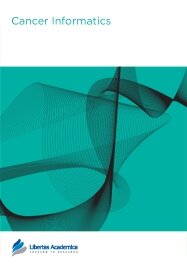

Publication Date: 07 Dec 2010
Type: Methodology
Journal: Cancer Informatics
doi: 10.4137/CIN.S6315

Despite decades of intensive research, NHL (non-Hodgkin lymphoma) still remains poorly understood and is largely incurable. Recent molecular studies suggest that genomic variants measured with SNPs (single nucleotide polymorphisms) in genes may have additional predictive power for NHL prognosis beyond clinical risk factors. We analyzed a genetic association study. The prognostic cohort consisted of 346 patients, among whom 138 had DLBCL (diffuse large B-cell lymphoma) and 101 had FL (follicular lymphoma). For DLBCL, we analyzed 1229 SNPs which represented 122 KEGG pathways. For FL, we analyzed 1228 SNPs which represented 122 KEGG pathways. Unlike in existing studies, we targeted at identifying pathways with significant additional predictive power beyond clinical factors. In addition, we accounted for the joint effects of multiple SNPs within pathways, whereas some existing studies drew pathway-level conclusions based on separate analysis of individual SNPs. For DLBCL, we identified four pathways, which, combined with the clinical factors, had medians of the prediction logrank statistics as 2.535, 2.220, 2.094, 2.453, and 2.512, respectively. As a comparison, the clinical factors had a median of the prediction logrank statistics around 0.552. For FL, we identified two pathways, which, combined with the clinical factors, had medians of the prediction logrank statistics as 4.320 and 3.532, respectively. As a comparison, the clinical factors had a median of the prediction logrank statistics around 1.212. For NHL overall, we identified three pathways, which, combined with the clinical factors, had medians of the prediction logrank statistics as 5.722, 5.314, and 5.441, respective. As a comparison, the clinical factors had a median of the prediction logrank statistics around 4.411. The identified pathways have sound biological bases. In addition, they are different from those identified using existing approaches. They may provide further insights into the biological mechanisms underlying the prognosis of NHL.
PDF (632.38 KB PDF FORMAT)
RIS citation (ENDNOTE, REFERENCE MANAGER, PROCITE, REFWORKS)
Supplementary Files 1 (56.83 KB ZIP FORMAT)
BibTex citation (BIBDESK, LATEX)
XML
PMC HTML
I would like to extend my gratitude for creating the next generation of a scientific journal -- the science journal of tomorrow. The entire process bespoke of exceptional efficiency, celerity, professionalism, competency, and service.

All authors are surveyed after their articles are published. Authors are asked to rate their experience in a variety of areas, and their responses help us to monitor our performance. Presented here are their responses in some key areas. No 'poor' or 'very poor' responses were received; these are represented in the 'other' category.See Our Results
Copyright © 2013 Libertas Academica Ltd (except open access articles and accompanying metadata and supplementary files.)
FacebookGoogle+Twitter
PinterestTumblrYouTube